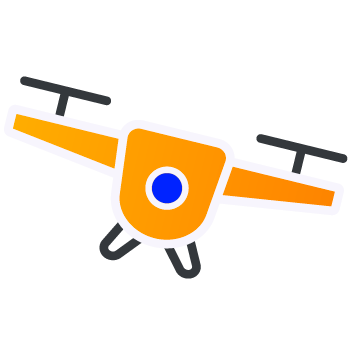You have probably heard the news by now that DJI recently released the Mavic 3 as the newest member of their flagship Mavic lineage. While this is exciting news for earlier adopters and drone enthusiasts, how will this impact your solar drone program and what will you do with your drone budget for the new year?
In this drone review, we will be going over the DJI Mavic 3, the latest Autel EVO II Pro, and the soon-to-be-released Autel EVO Lite and Autel EVO Nano. This article was written in collaboration with Scott Gillespie of Dronetegrity.
DJI Mavic 3 Spec Overview
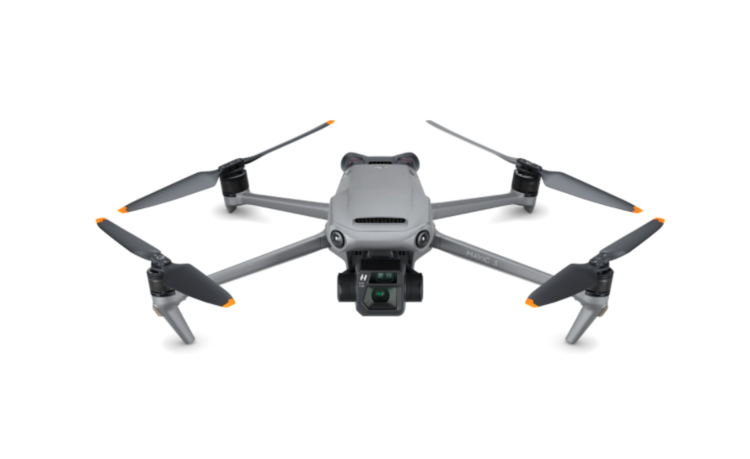
DJI Mavic 3
While highly anticipated, does the DJI Mavic 3 have what it takes to join your solar drone fleet and continue to be the workhorse you have come to expect from the Mavic lineup? Let’s see what all the hype was about.
Weight: 895g, slightly lighter than the Mavic 2 Pro
Body Type: Foldable, sleek design for portability
Speed: ~43 mph
Flight time: 46 minutes
Operation Temperature Range: 32°F to 104° F
Cameras: Hasselblad Camera with 4/3” CMOS 20 MP sensor and a Tele Camera with a ½” CMOS sensor with 4x digital zoom, 5.1K video
App: DJI Fly App rather than the DJI Go 4 App
Price:
-
Mavic 3 – $2,199
-
Mavic 3 Fly More Combo – $2,999
-
Mavic 3 Cine Premium Combo – $4,999
Photo Credit: DJI
Pros:
The Mavic 3 has an upgraded design for nearly 50% better flight time over the Mavic 2 Pro, improved obstacle sensing which provides a smoother flight and two – yes, two – amazing cameras that allow you to capture 20MP photos, record 5.1K videos and track your subject from afar with 4x digital zoom capabilities. This drone blurs the line of what is possible on a ‘consumer grade’ platform.
Cons:
As much as we want to rave about the Mavic 3, we do have some reservations about its ability to be a contributor to your drone fleet. First, DJI decided to have it utilize their Fly app rather than their Go 4 app. By doing so, there is limited functionality and no access to 3rd party apps. Second, the Fly app does have a Circle (not Orbit) quick shot feature, however this does not allow for timed interval photos, which is a crucial piece to the workflow needed to generate accurate 3D models to create solar project layouts. Last, the price. We’re not saying the drone isn’t worth it, but the price for the base package is a bit higher than we would have liked to see given that the Mavic 2 Pro was $600 less.
Autel EVO II Pro Spec Overview
In the past, it has been very difficult to find a drone with equal features and functionality that could compete with the DJI Mavic 2 Pro and now the DJI Mavic 3 on price. There has always been a wide gap between market dominant DJI and everyone else trying to catch up. Well, it looks like that time has come. A true competitor has risen. Let’s dive in and take a look.
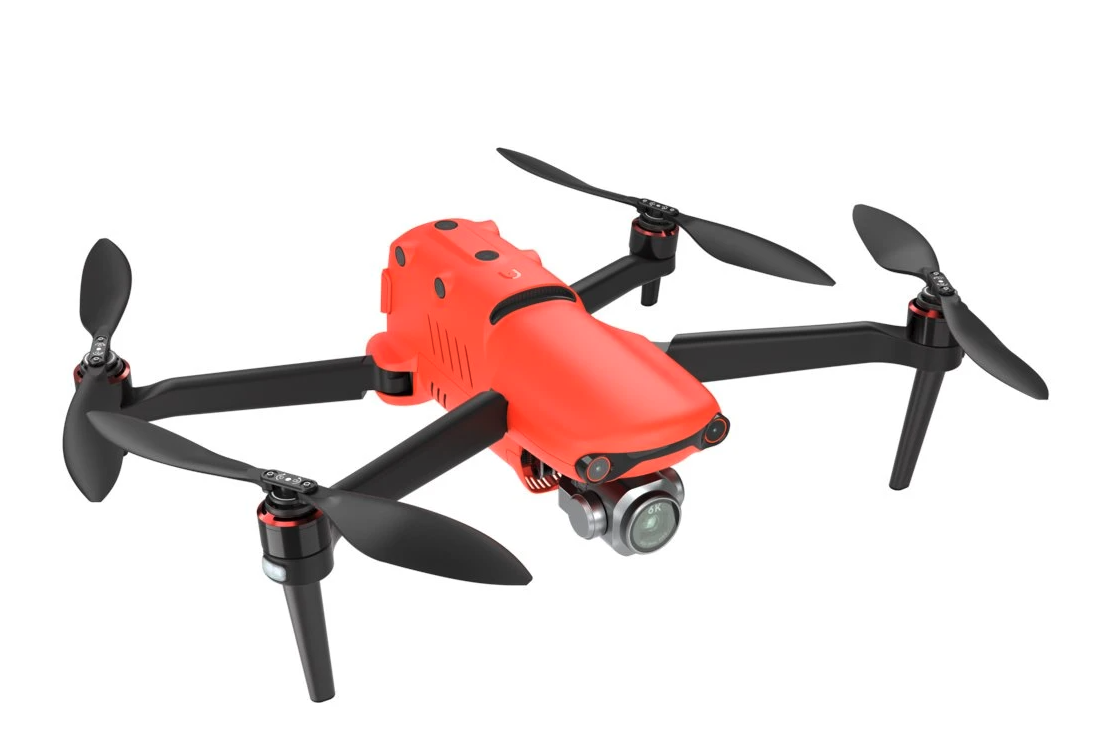
Autel EVO II Pro
Weight: 1191g
Body Type: Foldable
Speed: ~45mph
Flight time: 40 minutes
Operation Temperature Range: 14°F to 104°F
Cameras: 1” CMOS 20MP sensor, 6K video
App: Autel Explorer
Price:
-
EVO II PRO 6K (Single-Band) – $1,783.00
-
EVO II PRO 6K (Dual-Band) – $1,795.00
-
EVO II PRO 6K Rugged Bundle (Dual-Band) – $2,095.00
Photo Credit: Autel
Pros:
The EVO II Pro offers a feature package exceeding that of the Mavic 2 Pro and highly competitive with the Mavic 3. When comparing these drones, it honestly comes down to preference and which one is best suited for the task at hand. So what can set this drone apart?
First, if you work in an airspace that is congested with geofences from DJI, the EVO II Pro could be your answer. This drone does not have geofencing to work around, which will make your pre-flight ops that much more efficient. Second, the Autel software includes built in mapping/grid style flight patterns, which can come in handy for additional image capture. Third, with an almost 10 minute flight time advantage over the Mavic 2 Pro and nearly equivalent to the Mavic 3, you can get close to a true 30 minute flight before safely returning for landing. The increased battery life will certainly help reduce battery swaps during data acquisition and help you be more efficient during solar site surveys.
Cons:
While there are not too many cons we can think of for the EVO II Pro drone, we come back to price. While coming in under the price of the Mavic 3, it still is a bit more expensive than what the Mavic 2 Pro was when in production. Even with that said, we think the value in the drone is tremendous and that it is well worth the additional cost.
Autel EVO Lite Spec Overview
The Autel EVO Lite and EVO Lite+ drones were built to compete with the DJI Mavic Air 2 and Mavic Air 2S. However, with prices just under what the DJI Mavic 2 Pro cost and similar specs, this drone could pose an additional threat by filling the price gap left by Mavic 3’s entry price of over $2,000. Let’s take a closer look at the details.
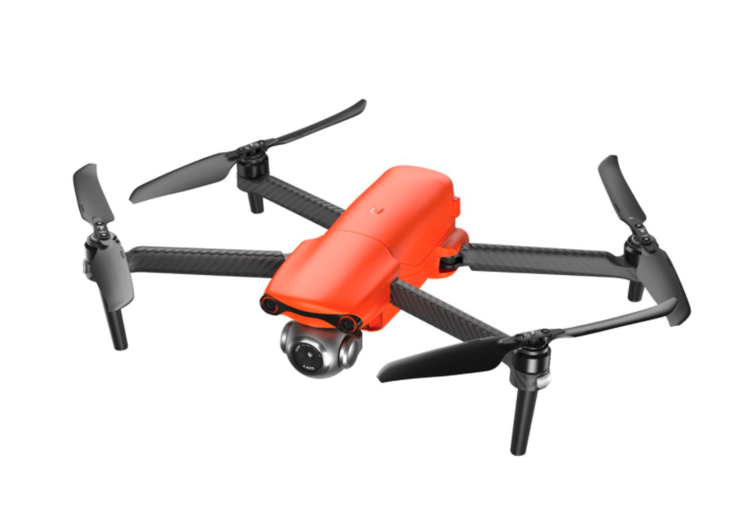
Autel EVO Lite
Weight: 835g
Body Type: Foldable
Speed: ~43mph
Flight time: 40 minutes
Operation Temperature Range: 32°F to 104° F
Cameras: Lite:1/1.28” CMOS 50 MP sensor, 4K HDR / Lite+: 1” CMOS 20 MP sensor, 6K video
App: Autel Sky
Price:
-
Evo Lite – $1,149.00
-
Evo Lite+ – $1,249.00
-
Evo Lite with Premium Bundle – $1,449.00
-
Evo Lite+ with Premium Bundle – $1,549.00
Photo Credit: Autel
Pros:
Would it be wrong to say that the EVO Lite could be a better value than the Lite+? Well, depending on the buyer, it could be. The EVO Lite, being the base model, packs some powerful features like a 1/1.28” CMOS 50 MP sensor and 4K HDR video. Additionally, it offers an RYYB color sensor rather than the traditional RGGB sensor for better low light performance. Now, here is where the comment from above comes in. The Lite model offers a 4-axis gimbal. The 4th axis allows the camera sensor to be rotated for portrait mode pictures giving content creators more flexibility in their shoots. This 4-axis gimbal is not a feature on the Lite+ model.
Not to be outdone, the EVO Lite+ model offers a 1” CMOS 20MP sensor and 6K/30fps video. It has the ability to rebalance overexposure or underexposure to allow natural colors to really shine through. It also offers 2.7K/30FPS video transmission back to the pilot and phased plus contrast autofocus for improved subject tracking.
Cons:
First, the initial release date for the EVO Lite and Lite+ was back in September 2021. Now, the release date isn’t until February 2022. Pre-ordering is available on sites like B&H, Autelpilot and others, so we’ll see if consumers are willing to wait. Second, when it comes to pricing, the EVO Lite and Lite+ come in about $200 more than the DJI Mavic Air 2 and Air 2S. Typically, customers looking at these drones are price conscious, so it will be interesting to see if the obstacle avoidance and smart functionalities are enough to push buyers to the checkout line. Last, is unknowns. Other than the information released by Autel, we really don’t know much in terms of actual flight handling and performance. Will the Autel Sky app function similarly to the Autel Explorer app that the Evo II Pro uses? We hope so, but we’ll have to wait and see.
Autel EVO Nano Spec Overview
The EVO Nano and Nano+ drones were built to compete with the DJI Mini 2. Their light weight, long flight time and camera components really make them a competitor in the space dominated by DJI for so long. Let’s take a closer look at what we know of the offering.
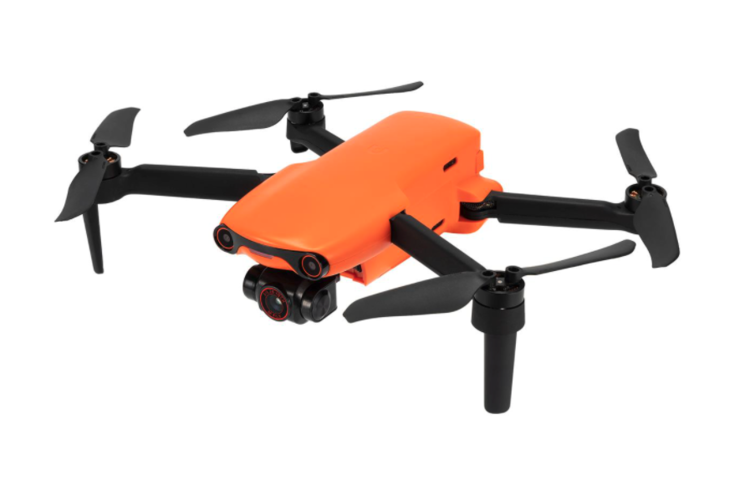
Autel EVO Nano
Weight: 249g
Body Type: Foldable
Speed: ~34mph
Flight time: 28 minutes
Operation Temperature Range: 14°F to 104°F
Cameras: Nano: ½” CMOS 48MP sensor, 4K HDR video / Nano+: 1/1.28” CMOS 50MP sensor, 4K HDR video
App: Autel Sky
Price:
-
Evo Nano – $649.00
-
Evo Nano+ – $799.00
-
Evo Nano with Premium Bundle – $799.00
-
Evo Nano+ with Premium Bundle – $949.00
Photo Credit: Autel
Pros:
Autel has done a great job creating an entry level drone with high capabilities, comparable flight time and equivalent weight. One capability that really sticks out was the inclusion of obstacle avoidance. The DJI Mini 2 does not offer obstacle avoidance and we think it is a great value add and differentiator on this level of drone. Smart shooting modes and editing features look to make this drone a well rounded package.
Cons:
Similar to the cons of the EVO Lite and Lite+, we consider the points about release delays, price and unknowns as valid for the EVO Nano and Nano+ as well. With so much upside, yet close competition with DJI, it is hard to not be concerned about the ability for Autel to deliver. We are stuck in a sit and wait game until we are able to see the drone in action.
Final Thoughts and Conclusion
Scanifly has long been advocates for the DJI Mavic 2 Pro given its portability, ease of operation and the ability to flawlessly execute a point of interest (POI) flight pattern. With the arrival of the DJI Mavic 3 and the discontinued production of the DJI Mavic 2 Pro, customers will now have to make a decision on what to do when it is time to purchase their next drone(s).
Our recommendation is that if you are in the market for purchasing new drones, that you go with the Autel EVO II Pro given that they are in production, have equivalent or better features than the Mavic 2 Pro and Mavic 3 and have an established track record for capturing the data needed for Scanify to process. The Mavic 3’s lack of orbit mode and use of the Fly app are really what is causing hesitation in recommending it.
Now, if you are brand loyal or unsure you want to make the switch to Autel, that is understandable. With the release of the DJI Mavic 3, opportunities to pick up a refurbished or used DJI Mavic 2 Pro may be slim to none. That said, the DJI Mavic Air 2 and Air 2S could be economical options for your solar drone program due to their lower price point, intelligent flight mode features and great camera quality.
Overall, the drone you choose to purchase needs to give you the capabilities to complete the required work flow for your solar site surveys, so you can create quality deliverables. While there is no perfect drone, there are a number of reasonably priced, capable, and feature packed drones for you to choose from. Hopefully this article provided some clarity for you in your next (or first!) drone purchase. Please visit our recommended drones guide for our complete list of supported drones.

